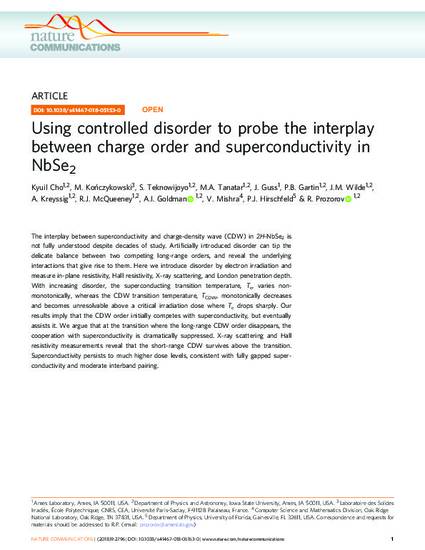
The interplay between superconductivity and charge-density wave (CDW) in 2H-NbSe2 is not fully understood despite decades of study. Artificially introduced disorder can tip the delicate balance between two competing long-range orders, and reveal the underlying interactions that give rise to them. Here we introduce disorder by electron irradiation and measure in-plane resistivity, Hall resistivity, X-ray scattering, and London penetration depth. With increasing disorder, the superconducting transition temperature, Tc, varies non-monotonically, whereas the CDW transition temperature, TCDW, monotonically decreases and becomes unresolvable above a critical irradiation dose where Tcdrops sharply. Our results imply that the CDW order initially competes with superconductivity, but eventually assists it. We argue that at the transition where the long-range CDW order disappears, the cooperation with superconductivity is dramatically suppressed. X-ray scattering and Hall resistivity measurements reveal that the short-range CDW survives above the transition. Superconductivity persists to much higher dose levels, consistent with fully gapped superconductivity and moderate interband pairing.
Available at: http://works.bepress.com/ai-goldman/41/